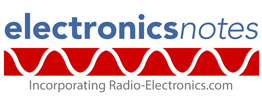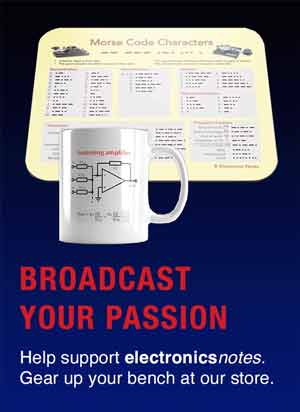Understanding CISPR 22: EN 55022 EMC Standard
Understand the concepts, measurements and tests for CISPR 22, EN 55022 standard for EMC for information technology equipment with comparison to FCC Part 15.
EMC / EMI Includes:
EMC basics
EMI interference basics
EMC standards
CISPR11
CISPR16
CISPR22
FCC 47 part 15
EMC design techniques
EMC compliance test
CISPR 22 is a widely used standard for electromagnetic compatibility within Europe for Information Technology Equipment, ITE. CISPR 22 is maintained by CISPR: the International Special Committee on Radio Interference
There is also another related standard: EN 55022 which is the CENELEC standard. EN 55022 is a modified derivative for CISPR 22 and as a result both standards are used within the industry.,
CENELEC is the European Committee for Electrotechnical Standardisation and has produced EN 55022 based upon the original CISPR 22 standard.
What is CISPR 22
CISPR 22 is the CISPR standard for Information Technology Equipment-Radio Disturbance Characteristics-Limits and Methods of Measurement and it is controlled by the International Electrotechnical Commission, IEC. The IEC is made up of national electrotechnical committees from over 170 countries. The IEC Technical Committee 77 (TC 77) is responsible for developing and maintaining the CISPR 22 standard.
CISPR 22 has been adopted for use by most members of the European Community and in addition to this, it is used in other countries as a standard on which to base EMC design criteria and measurements.
Also in the United States, compliance with CISPR 22 is required by the Federal Communications Commission (FCC) under Part 15 of its rules.
The limits specified in CISPR 22 are designed to minimize the impact of EMI on other electronic devices. For example, a computer that emits too much EMI could interfere with the operation of a nearby radio receiver.
CISPR 22 & FCC
With CISPR 22 being widely used within the European Community, it is often necessary to relate it to other standards, the main one being the FCC, Federal Communications Commission in the USA. Here the FCC Part 15 standard is used.
To ensure that either standard can be used to certify digital electronic equipment, FCC Part 15 and CISPR 22 have been made to be relatively harmonious, although there are a few differences.
CISPR 22 differentiates between Class A and Class B equipment and it gives figures for conducted and radiated emissions for each class. In addition, CISPR 22 requires certification over the frequency range of 0.15 MHz to 30 MHz for conducted emissions. On these points there are differences between CISPR 22 and the FCC Part 15.
Also CISPR 22 has no specified limits for frequencies above 1.0 GHz, and CISPR limits are provided in dBµV, while the FCC limits are specified in µV which means that a simple conversion is required for direct comparisons.
In terms of similarities the conducted and radiated emission limits specified in CISPR 22 and FCC Part 15 are close to each other, i.e. within a few dB of each other over the detailed frequencies.
In this way it is possible to meet both standards easily for the certification process.
CISPR22 basics
Within CISPR22 there are two classes of equipment that can be considered for testing, etc:
Class A: CISPR 22 Class A equipment is designed to cover what is termed information technology equipment, ITE, that is intended for use in industrial environments. Class A has higher emission limits than Class B equipment because the equipment that comes under CISPR22 class A is intended for use in commercial environments where the equipment is typically less susceptible to electromagnetic interference.
Typical types of equipment may included: industrial motors, arc welders, medical equipment and test and measurement equipment.
Class B : CISPR 22 Class B equipment is intended to cover ITE that might be used in residential and more sensitive commercial environments. It is designed to have lower emission limits than Class A equipment, in order to minimize interference with other electronic devices.
Typical equipment that would be covered by CISPR22 Class B might include: computers, laptops, printers, monitors, televisions, smartphones, touters,, Ethernet switches and the like.
It is worth defining the various environments at are mentioned in CISPR 22.
Residential environment: An environment in which people live, such as a house or apartment.
Commercial environment: An environment in which people work or do business, such as an office or store.
Industrial environment: An environment in which products are manufactured or processed, such as a factory or warehouse.
Like many forms of EMI testing, that for CISPR is comprises two elements, namely the conducted and radiated emissions.
Conducted emission testing is undertaken between frequencies of 150kHz and 30MHz. An alternating signal is conducted into the line source and is measured using two methods: quasi-peak and then average, each having its own test limits.
The radiated emission testing uses much higher frequencies in the range 30MHz - 1GHz. This test uses the radiated magnetic field from the device under test, DUT. The testing upper range, 1GHz, applies to any device or equipment that has an internal oscillator frequency up to 108MHz. This upper frequency limit is increased to 2GHz if the device or equipment has an internal oscillator with a frequency of up to 500MHz. The range extends further to 5GHz for an internal oscillator up to 1GHz, and then 6GHz if the internal oscillator is higher than 1GHz.
Summary of CISPR 22 limits
The tables below give a summary of the field strength limits for conducted and radiated emissions within the per CISPR 22 standard.
| CISPR 22 Class A Conducted EMI Limit | ||
|---|---|---|
| Frequency of Emission (MHz) | Conducted Limit (dBµV) | |
| Quasi-peak | Average | |
| 0.15 - 0.50 | 79 | 66 |
| 0.50 - 30.0 | 73 | 60 |
| CISPR 22 Class B Conducted EMI Limit | ||
|---|---|---|
| Frequency of Emission (MHz) | Conducted Limit (dBµ;V) | |
| Quasi-peak | Average | |
| 0.15 - 0.50 | 66 to 56 | 56 to 46 |
| 0.50 - 5.00 | 56 | 46 |
| 5.00 - 30.0 | 60 | 50 |
| CISPR 22 Class A 10-Metre Radiated EMI Limit | ||
|---|---|---|
| Frequency of Emission (MHz) | Field Strength Limit (dBµV/m) | |
| 30 - 88 | 39 | |
| 88 - 216 | 43.5 | |
| 216 - 960 | 46.5 | |
| above 960 | 49.5 | |
| CISPR 22 Class B 3-Metre Radiated EMI Limit | ||
|---|---|---|
| Frequency of Emission (MHz) | Field Strength Limit (dBµV/m) | |
| 30 - 88 | 40 | |
| 88 - 216 | 43.5 | |
| 216 - 960 | 46.0 | |
| above 960 | 54.0 | |
CISPR22 is an important testing standard for electromagnetic compatibility and it is widely used throughout Europe as well and in many other countries where they want to follow an established standard.
 Written by Ian Poole .
Written by Ian Poole .
Experienced electronics engineer and author.
More Circuits & Circuit Design:
Op Amp basics
Op Amp circuits
Power supply circuits
Transistor design
Transistor Darlington
Transistor circuits
FET circuits
Circuit symbols
Return to Circuit Design menu . . .



